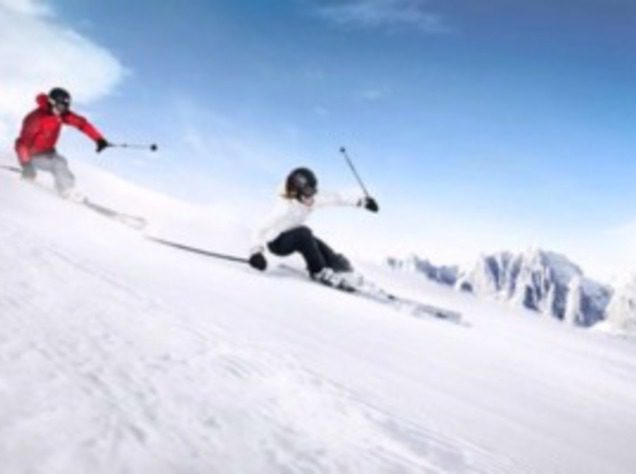Anyone who grows up skiing in the northeast is familiar with icy slopes. The alpine ski mountains in Vermont, New Hampshire, and Maine do see snow but, for most of the winter, are covered in patches of ice. Some people argue that the best ski racers are from the northeast because, after growing up on the ice, they can carve their skis through anything. Skiing on ice is hard, but people who know how to ski on it are not necessarily better skiers. There are skiing tricks and techniques that can make a huge difference when taking on icy slopes. These conditions are most common in the late fall, when rain freezes, and early spring, when snow melts and freezes. Whether you are learning how to ski or are struggling on icy runs, make sure you know how to safely handle these conditions.
Prepare Your Skis: Your skis are a deciding factor on how well you can perform on icy trails. Skis edges rust and dull over time and, without sharp edges, turning and stopping on ice will be impossible. Get into the habit of frequently sharpening your ski edges. You can learn to sharpen ski edges yourself or, if you are a beginner skier, go to a ski shop and have them assist you. Ski shops have experts who will know when to sharpen your skis if you are unsure.
Control: Skis are designed for snow not ice, so you have to focus on safety when you find yourself on an ice patch. Ice is difficult because skis can’t easily hold their edges, which allow you to turn. To successfully maneuver on ice, start by bending your knees to lower your center of gravity. The goal is to find your edge, so try to lean your body to the uphill side of wherever your ski tips are facing. Try to avoid skidding; sliding down ice often feels safer because you are slowing down but, in reality, you are more likely to have your skis slide out from under you. Every ski has a “sweet spot” where it can find its edge. Practice finding your perfect edge on normal snow and then try to reenact that same lean on the ice. If you can safely lean and press your skis into the slope, you should be able to hold your edge and find a controlled path across the ice.
Skiing on ice is a unique aspect of the sport. The only real way to learn how is from experience. So, if you know that a mountain has icy conditions, make sure you ski down less difficult runs at the start of the day. With practice, you won’t have to fear the ice and can ski the northeast whenever the mountains are open.
CoachUp is the safest and easiest way to find a private skiing coach.With our 100% money-back guarantee and vetted coaches, anyone can achieve their full athletic potential. Find your perfect private coach today and become the athlete you want to be!
How useful was this post?
Click on a star to rate it!
Average rating 4.3 / 5. Vote count: 3
No votes so far! Be the first to rate this post.



